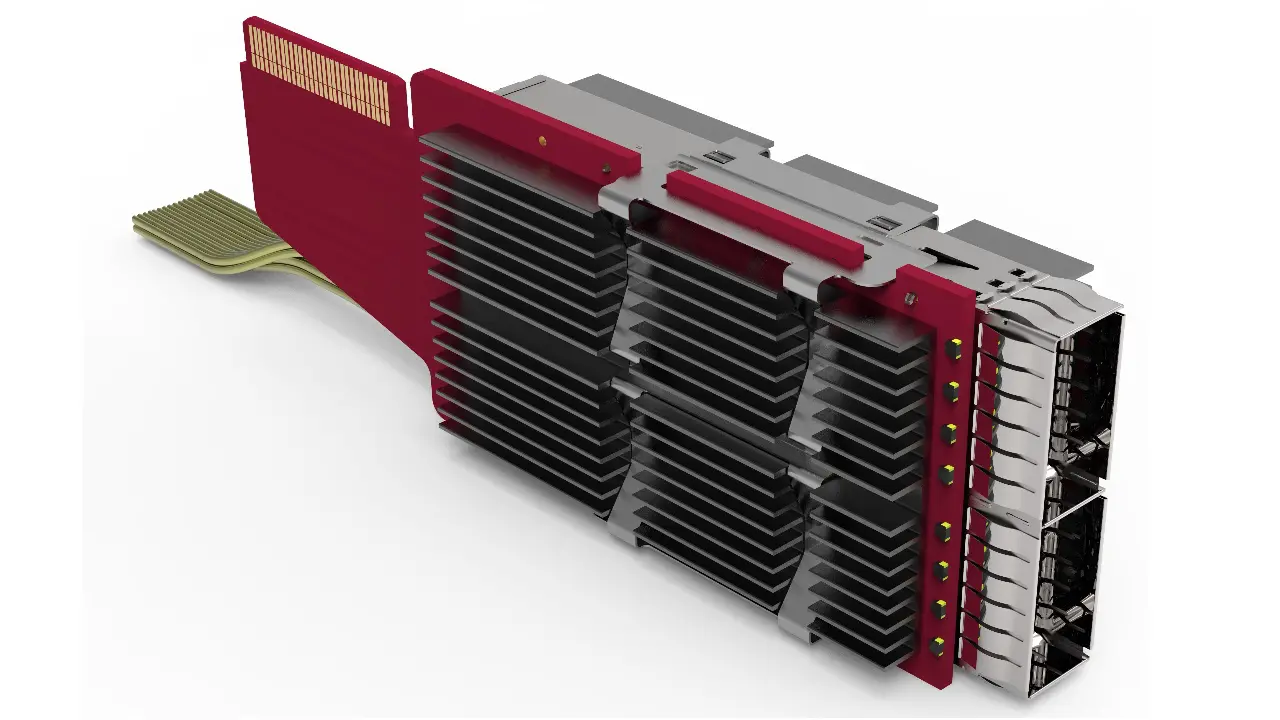As industry prepares for the launch of next-generation copper and optical QSFP-DD transceivers, thermal management strategies are critical. The new Molex QSFP-DD thermal solution can cool a range of 15W to 20W in different configurations with a 15 degree Celsius change from ambient temperature.
In data centers and telecommunication infrastructure, 56 and 112 Gbps PAM-4 signaling is the latest development in serial data signal formats. Implementation of high data rate protocols such as PAM-4 require a clean channel (i.e., low signal-to-noise ratios). The Molex QSFP-DD Interconnect System’s 8-lane electrical interface transmits up to 28 Gbps NRZ or 56 Gbps PAM-4, up to 200 or 400 Gbps aggregate, with the same module form factor as QSFP interconnects, making them backward compatible.
With signal integrity becoming paramount, data center and network designers can no longer utilize inexpensive FR4 material. Nevertheless, better-performing PCB materials come at a price premium. BiPass I/O high-speed solutions with low-insertion-loss copper twinax cables (twinax is a type of cable similar to coaxial cable, but with two inner conductors instead of one) can serve as a PCB alternative to enable efficient and reliable implementation of 56 and 112 Gbps PAM-4 protocols. The solution reduces the overall signal integrity requirements of the main PCB by removing the sensitive high-speed signals via twinax cables enabling greater channel margin compared to PCB alone and allowing for a second heat sink on the bottom side of the cage to make contact with the module, providing additional cooling.
“If you need to be able to cool a 15W module, there are a number of different solutions available today,” said Chris Kapuscinski, global product manager, Molex. “We now have the ability to cool higher wattage modules. The BiPass solution has the opportunity to save designers money as well as be a key enabler as we move forward with 112 Gbps PAM-4 implementations.”
“As demand for faster data rates grow, data center technology is evolving quickly, and thermal management technology must keep up. The BiPass solution allows for better temperature control of a system using advanced materials, the latest tools and cutting-edge technologies without compromising performance,” added Kapuscinski.
With the move to PAM-4, ASICs used in data centers and networks are being asked to do more, resulting in increased energy consumption. As a result, designers have turned to installing retimers on the main PCB or have relied upon them in the active optical transceivers to enable a “turning down” of the ASIC. However, this only shifts the energy consumption from the ASIC to the retimers. BiPass I/O Cable Assemblies eliminate the need for retimers in the channel, allowing higher wattage modules to be cooled and helping designers on the path toward 112 Gbps.
The BiPass solution allows designers to bypass the lossy printed circuit board by utilizing Temp-Flex high-speed twinax. Because of this, they can achieve lower insertion loss when going from an ASIC in a switch or a router to another server within a rack. Advances in heat sink technologies are enabling highly efficient, reliable and resilient thermal management strategies to support higher density in both copper and optical connectivity. From a future perspective, this signal integrity performance and low insertion loss capability allows designers to use passive copper throughout the entire design.






